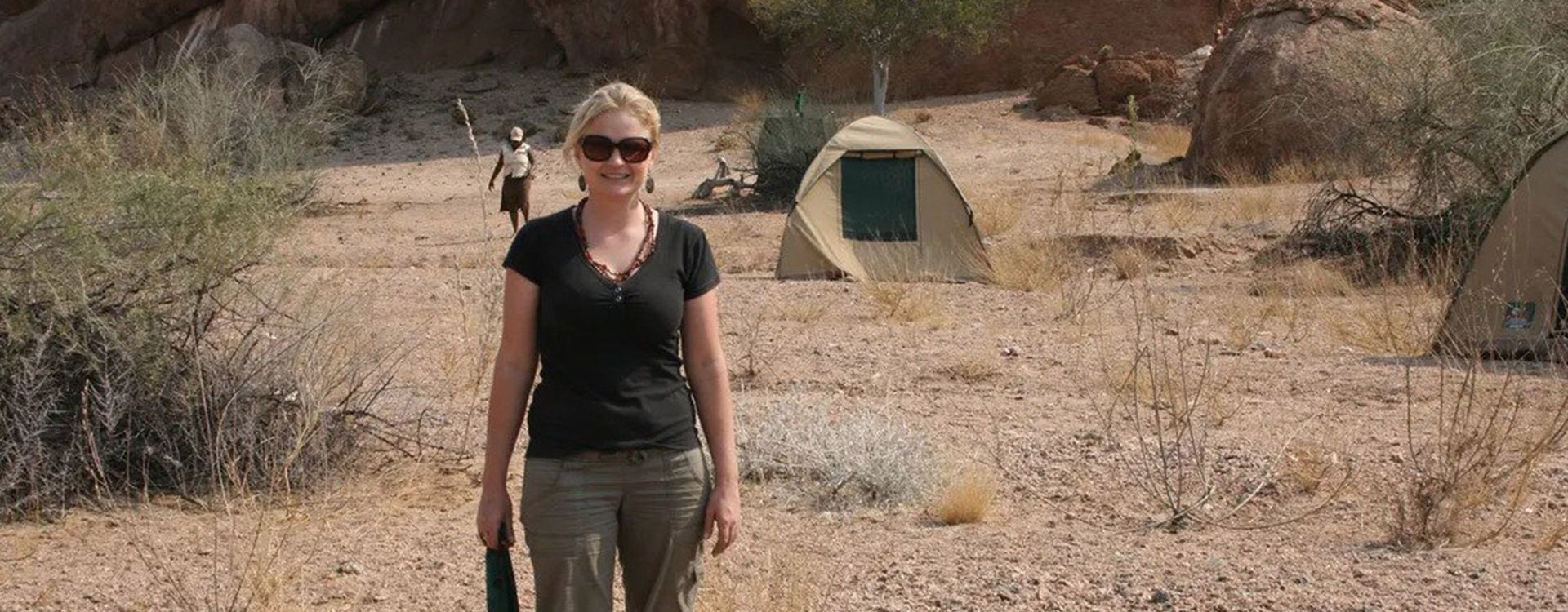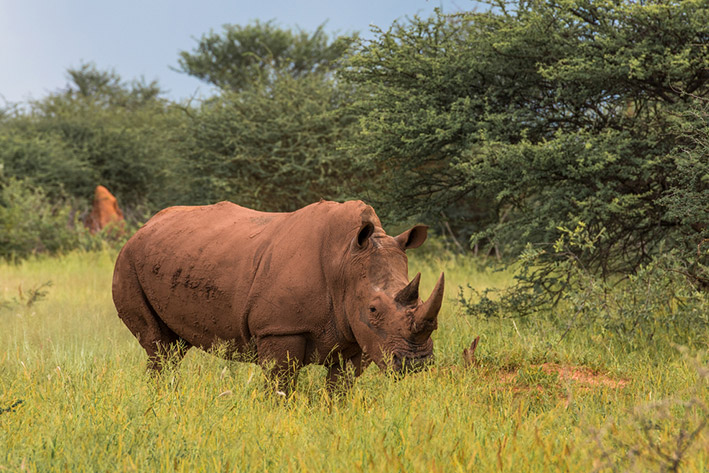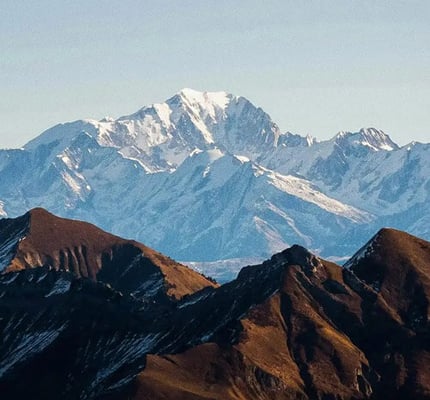Lightfoot Travel
WhatsApp Business Account

Lightfoot Travel’s Head of Africa Victoria was born in Waterberg Plateau Park, Namibia. The daughter of a senior park warden, she experienced a childhood that most of us could only dream of…
It’s a beautiful national park in the middle of Namibia on top of a flat sandstone mountain. Being on top of this mountain creates a natural perimeter for the wildlife. It’s not the largest national park in Namibia, but it has lots of endemic species, particularly bird species. And the purpose of creating this national park was for the protection and breeding of semi-endangered wildlife to secure population numbers.
It was when black rhino were first introduced into the national park in 1989. There was an upsurge of poaching at that time in southern Africa, so I remember this being quite an important event. The truck carrying the rhino arrived really late at night, so my brothers and I were taken out of our beds and driven up to the top of the mountain to witness their arrival. I remember sitting in the passenger seat of an old Mercedes-Benz truck, feeling cold as I was wearing my pyjamas and staring out through the windscreen at the night sky - the stars were absolutely incredible. I was only five at the time, but I knew I was about to see something that was really momentous.

I would spend the day with my father or my mother depending what was happening. My father would go on patrols and as I got older, I would join him. We would do rhino monitoring, look at bore holes and check broken fences. When we did these patrols, my father would show me how to track animals. I could probably track animals now thanks to all the techniques he taught me. We would also ride in helicopters if there was an event such as wildlife being moved.
We were the rescue centre for animals coming from surrounding farms, or animals that had been confiscated from people who didn’t have the correct permits… There was also always a steady flow of tortoises, owls and even vultures coming through. The national park is surrounded by farmland and the farmers would unfortunately try and protect their livestock by poisoning the cheetah, leopard and jackels, who also live in the area. The cheetahs would be taken to the Cheetah Conservation Fund, while the owls and vultures that would scavenge the meat and be poisoned would be brought to our home. My mum would try and flush their systems and try and make them eat again. We had a vegetable garden that was cordoned off with wire and poles and there was always a big bird of prey being rehabilitated in there.
We used to ring birds to monitor their migratory patterns. We would put a mouse inside a wire cage, which a kite or eagle would try to catch, but before they would reach the mouse, we would cover the raptor and place a ring around its leg. The numbers on the rings were all recorded in a central data base. My job was to ring the smaller birds and to feed and care for the mice that were being used as bait in the traps.
There was one particular place that was 6km from our house, Okatjikona, which had these beautiful big boulders and I could find quite an easy path to the top of the mountain. The views from the top of the mountain were amazing. I used to love going to the top of the mountain with my dad and join him on hikes for three or four days at a time. We would walk during the day, then in the evening we would get back to camp and have a bucket shower, and then prepare our food over the fire. They were just heavenly memories.
There was one occasion when I went camping on my own when I was six. My brother had taught me how to make fire and I was excited to try out this new skill. I wanted to light a fire, cook my dinner and sleep under canvas. I told my parents exactly where I was going to build my tent and they gave me permission to go. I made my dinner, extinguished my fire with sand, but I didn’t sleep that much as I was so excited and a little bit scared.
I thought I was on my own, but my dad asked one of the farm workers Frans if he could walk 300 metres behind me and check I was okay. I found out later that a leopard had followed me for about 500 metres. Our parents never made us feel like we couldn’t do it on own – you have to be confident to live in a place like that.

Living in a national park, you’re not allowed to keep domesticated animals like cats and dogs. I did keep snakes called egg eaters, which are harmless to humans and not venomous. However, snakes were always something I was wary of. I remember one day when I was scrambling over rocks, I hoisted myself up and I came face to face with nest of snakes. I absolutely pooped myself.
Poaching for me was the hardest to understand. I will never forget the first time that I came across the carcass of a rhino. Its horns had been hacked off and it had been left there to die. For me as a child that was extremely traumatic. It made absolutely no sense.
My father recently retired and now lives on the southern border of Namibia and south Africa. That intimate access that I had to the park has now gone. We could get a permit and I could go into the park for a couple of days, but it’s not the same. It’s probably the reason why I do what I do now as it affords me the opportunity to go back twice a year. Without my African fix I can’t cope (laughs). I consider myself extremely privileged and lucky to have spent my childhood there.
The Lightfoot Team travels to Africa at least once a year and can recommend only the best properties, adventures and safaris. Let us help you experience Africa with a tailor-made itinerary that suits you. Enquire now!
Northern TerritoriesAustraliaAustralasia
Discover abundant birdlife on safari in the Kakadu National Park
Observe the world’s largest crocodile population
Go horseback riding through rugged Western Australia
Appreciate the beauty of Kimberley from the air on a scenic flight
Stay in luxury lodges in the Australian wilderness
Serengeti & Northern TanzaniaNgorongoro Crater & Lake ManyaraTanzaniaAfrica
Nyerere National Park & Southern TanzaniaLake Tanganyika & Western Tanzania
African game drives in Ruaha National Park searching for elephant, giraffe, leopard, wild dog and lion
An early morning bird safari in Nyerere National Park
Explore the Great Rufiji River on a walking safari
Search the Mahale Mountains National Park for chimpanzees
Swim in ice-cold pools in the mountain waterfalls of Greystoke Mahale
